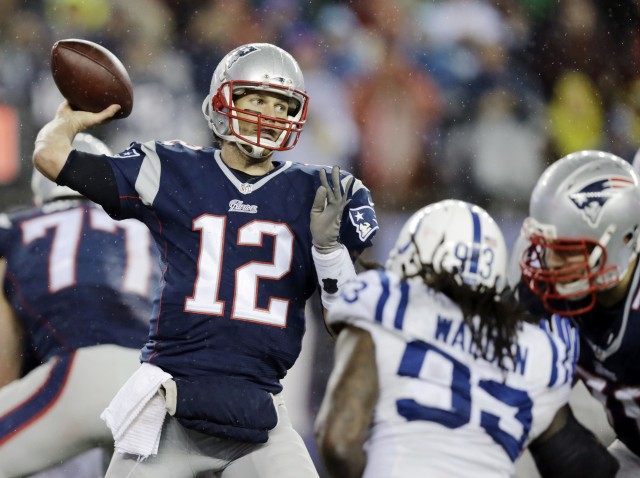A study by three researchers at the American Enterprise Institute judges it “unlikely” that the New England Patriots tampered with the footballs prior to the AFC Championship Game.
“When correct tests are performed, the evidence points to a conclusion that is inconsistent with the Wells findings,” AEI’s “On the Wells Report” maintains. “Our evidence suggests a specific sequence of events. The Wells report conclusions are likely incorrect, and a simple misunderstanding appears to have led the NFL to these incorrect conclusions.”
Specifically, the AEI research points out that the Wells Report admits that the referees tested just four Colts balls because the end of halftime approached but tested all of the Patriots balls, suggesting that the Colts balls sat in a warm locker room before testing longer than the Patriots balls, which explains the greater relative deflation in the New England balls.
“The fact that the officials ran out of time is highly material: it implies that the Colts balls were inside a warm room for almost the entire halftime before they were measured and thus had a chance to warm up,” Kevin Hassett, Joseph Sullivan, and Stan Veuger write. The first and last authors also wrote a report defending the New Orleans Saints when the NFL suspended head coach Sean Payton and several players in response to charges the team put bounties on the opposition. Former NFL Commissioner Paul Tagliabue reversed the penalties imposed on Saints players as a result of the appeal of Roger Goodell’s initial decision.
In the case of Tom Brady, Goodell farmed out his duties to mete out discipline to an underling. NFL Executive Vice President Troy Vincent issued a four-game suspension to the Super Bowl MVP. Goodell hears Brady’s appeal of the NFL’s decision on June 23.
In addition to the new explanation for why each team’s balls generally deflated in the cold at different rates, the report seizes upon several inconsistencies in the Wells Report documented by Breitbart Sports and others.
“[Referee Walt] Anderson remembers that he used the Logo gauge before the game,” the researchers point out, “but the Wells report, in a direct contradiction of that recollection, concludes that he used the Non-Logo gauge before the game.” This bizarre decision by Wells enables him to point to abnormal drops by Patriots balls relative to Colts balls. Accepting the referee’s testimony that he used the Logo gauge before the game puts eight Patriots balls at or above where the scientists employed by Ted Wells predicted they would measure at halftime. In other words, the case against Tom Brady deflates unless Wells chooses to disbelieve the testimony of the referee of the game whose word he accepts elsewhere.
The Patriots won the controversial game in emphatic fashion, defeating the Colts 45-7—with the blowout coming with blown-up balls in the second half—in the AFC Championship Game before winning a nail-biter over the Seattle Seahawks in the Super Bowl.
Relying on the Ideal Gas Law, the researchers come to conclusions that tip the Wells Report on its head: “The difference between the Patriots pressure drop and the Colts pressure drop…is significant, but only because the Colts ball pressure dropped too little rather than because the Patriots ball pressure dropped too much.”

COMMENTS
Please let us know if you're having issues with commenting.